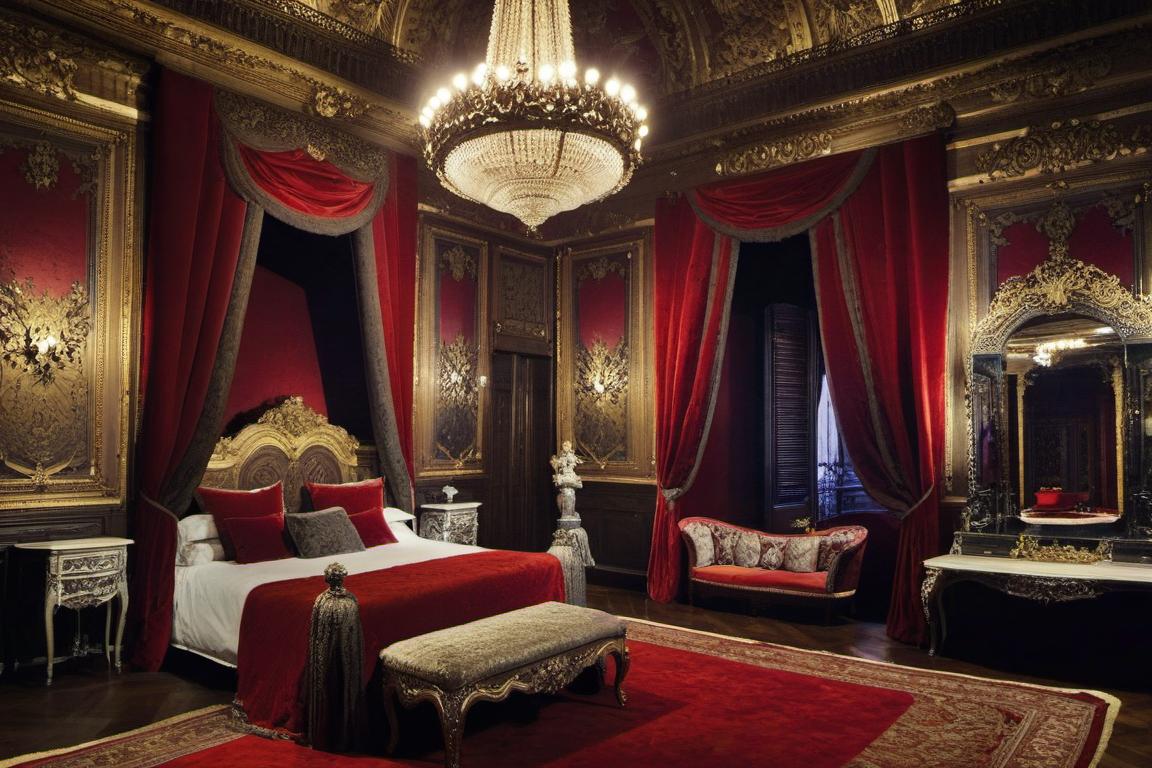
The Mysteries and Secrets of Palais Garnier
The Palais Garnier, an opulent architectural masterpiece, stands as one of Paris’ most iconic landmarks. Completed in 1875, it serves as a testament to the grandeur of the Second Empire and remains a cultural beacon for opera and ballet enthusiasts worldwide. However, beyond its gilded ceilings, marble staircases, and elaborate chandeliers, the Palais Garnier harbors a labyrinth of mysteries and secrets that have intrigued historians, artists, and visitors for generations.
A Vision of Grandeur
The Palais Garnier was commissioned by Emperor Napoleon III as part of a grand project to renovate Paris under the direction of Baron Haussmann. Designed by the young architect Charles Garnier, the opera house epitomizes the eclectic Beaux-Arts style. With its intricate sculptures, frescoes, and elaborate facade, the building is a feast for the senses. Yet, its grandeur also lends itself to an air of mystique.
The sheer scale of the Palais Garnier is astonishing. Covering nearly 12,000 square meters, the building includes a grand auditorium, a majestic foyer, an expansive stage capable of accommodating hundreds of performers, and even a subterranean lake. But it is the secrets woven into its design and history that make it truly remarkable.
The Phantom of the Opera
The most famous mystery surrounding the Palais Garnier is undoubtedly its association with Gaston Leroux’s 1910 novel The Phantom of the Opera. Leroux was inspired by real events and elements of the opera house itself, blending fact with fiction to create a timeless story.
The novel’s premise, a mysterious phantom haunting the opera house, captures the imagination, but what’s even more intriguing is the basis in reality. The Palais Garnier indeed has an underground lake, created to stabilize the swampy ground on which the opera house was built. This lake, located beneath the building, has fueled speculation about hidden chambers and secret tunnels. While it is now used for training Parisian firefighters in underwater rescue techniques, its existence has only added to the opera house’s enigmatic allure.
Architectural Secrets
The design of the Palais Garnier is a marvel, but it is also shrouded in enigmas. Charles Garnier incorporated numerous symbols and motifs into the building’s architecture, some of which remain open to interpretation. The grand staircase, for instance, is adorned with allegorical statues representing music, dance, and drama. Yet, some believe these statues conceal deeper meanings, potentially tied to Freemasonry or other esoteric traditions.
The opera house also features a hidden roof garden, accessible only to a select few. Garnier intended this space to offer panoramic views of Paris, but its existence is little-known, even among frequent visitors. Similarly, the dome above the auditorium, painted by Marc Chagall in 1964, conceals the original fresco by Jules Eugène Lenepveu. This hidden artwork adds another layer of intrigue to the building’s already rich history.
The Underground Lake
Beneath the Palais Garnier lies a network of tunnels, cellars, and not so many known subterranean lake. These underground spaces are not open to the public, which has only heightened their mystique.
When the opera house was being constructed in the 1860s under the direction of architect Charles Garnier, workers encountered significant challenges due to the high water table in the area. The site was swampy, and despite efforts to drain it, water continuously seeped into the foundations. To solve this problem, engineers designed a massive cistern below the building to control and contain the water.
The underground areas are said to house remnants of the building’s construction, including abandoned tools and scaffolding. Some have even speculated about secret passageways leading to other parts of Paris. Though no concrete evidence supports these claims, the very idea adds to the aura of mystery.
Ghost Stories and Legends
The Palais Garnier is not without its share of ghostly tales. Beyond the fictional Phantom of the Opera, there have been numerous reports of strange occurrences and apparitions within its walls. One of the most persistent legends involves a former ballerina who is said to haunt the grand foyer. Visitors and staff have reported hearing footsteps and whispers when no one else is around.
Another chilling tale involves the infamous chandelier crash of 1896. During a performance, a counterweight from the massive chandelier fell into the audience, killing one person. This tragedy, combined with the chandelier’s imposing presence, has inspired numerous ghost stories and superstitions among performers and visitors alike.
Hidden Rooms and Secret Spaces
The Palais Garnier’s vastness makes it a treasure trove of hidden rooms and secret spaces. One of the most intriguing is the “Box of Honor,” or Loge d’Honneur, reserved for distinguished guests. This box is said to have its own private entrance and antechamber, adding an air of exclusivity and mystery.
Another lesser-known feature is the opera house’s private library and museum, which contain rare manuscripts, scores, and artifacts from centuries of operatic history. While these spaces are occasionally accessible to researchers and select visitors, they remain largely off-limits to the general public, preserving their aura of secrecy.
The Curse of the Garnier Bees
A curious and lesser-known legend involves the Palais Garnier’s rooftop beehives. In recent years, the opera house has maintained beehives as part of an urban biodiversity project. However, some believe these bees are connected to an ancient curse. According to legend, disturbing the bees could bring misfortune to the opera house. While there is no historical basis for this claim, the story persists as part of the building’s rich tapestry of myths.
Modern Mysteries
Even in the 21st century, the Palais Garnier continues to captivate with its blend of history and modernity. In 2011, a hidden chamber was discovered during routine renovations. This room, located near the grand foyer, contained artifacts and decorations that had been untouched for over a century. The discovery sparked renewed interest in the opera house’s secrets and highlighted how much of its history remains unexplored.
Cultural and Artistic Significance
The mysteries of the Palais Garnier are not limited to its physical structure. The opera house has been a cultural and artistic hub for over a century, hosting some of the world’s greatest performers and productions. Its walls have witnessed triumphs, scandals, and tragedies, each contributing to its storied legacy.
One particularly enigmatic figure is the “Black Violinist,” a musician rumored to have performed in the Palais Garnier’s early years. According to legend, this violinist possessed an otherworldly talent but vanished under mysterious circumstances. While there is little evidence to support this tale, it endures as part of the opera house’s folklore.
The Palais Garnier is a repository of mysteries and secrets that continue to enchant and intrigue. From its subterranean lake and hidden rooms to its ghostly legends and artistic treasures, the opera house invites visitors to explore its depths and uncover its stories.
As one delves into the mysteries of the Palais Garnier, it becomes clear that its allure lies not just in its grandeur but in the sense of wonder it inspires. Whether you are an opera enthusiast, a history buff, or a seeker of the mysterious, the Palais Garnier offers an unforgettable journey into the heart of Parisian culture and intrigue.




